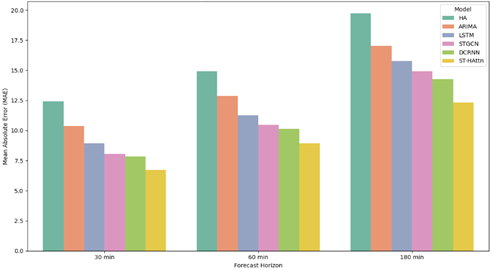Hierarchical Spatiotemporal Attention Network for Multi-Step Passenger Flow Prediction at Station Level: A Case Study of Gujranwala
Keywords:
Passenger flow prediction, Urban transportation, Spatiotemporal attention, Deep learningAbstract
Accurate multi-step passenger flow prediction is essential for optimizing urban transportation systems and enhancing service efficiency. This study proposes ST-HAttn, a novel hierarchical spatiotemporal attention-based deep learning model designed to forecast passenger flows at the station level. By simultaneously capturing local and global spatial dependencies alongside temporal dynamics, ST-HAttn effectively models complex, non-stationary mobility patterns inherent in urban transit networks. Evaluated on real-world passenger data from Gujranwala, the model outperforms traditional statistical methods and contemporary deep learning architectures, demonstrating significant improvements in mean absolute error (MAE), root mean squared error (RMSE), and mean absolute percentage error (MAPE) across multiple forecast horizons (30, 60, and 180 minutes). The hierarchical attention mechanism allows for adaptive feature extraction at both station and regional levels, facilitating robust predictions despite noisy and fluctuating demand patterns. The findings highlight ST-HAttn’s potential to support demand-responsive scheduling and resource allocation in smart transportation systems, contributing to reduced congestion and improved passenger experience. Future research directions include incorporating multimodal contextual data and validating model transferability to other urban settings.


